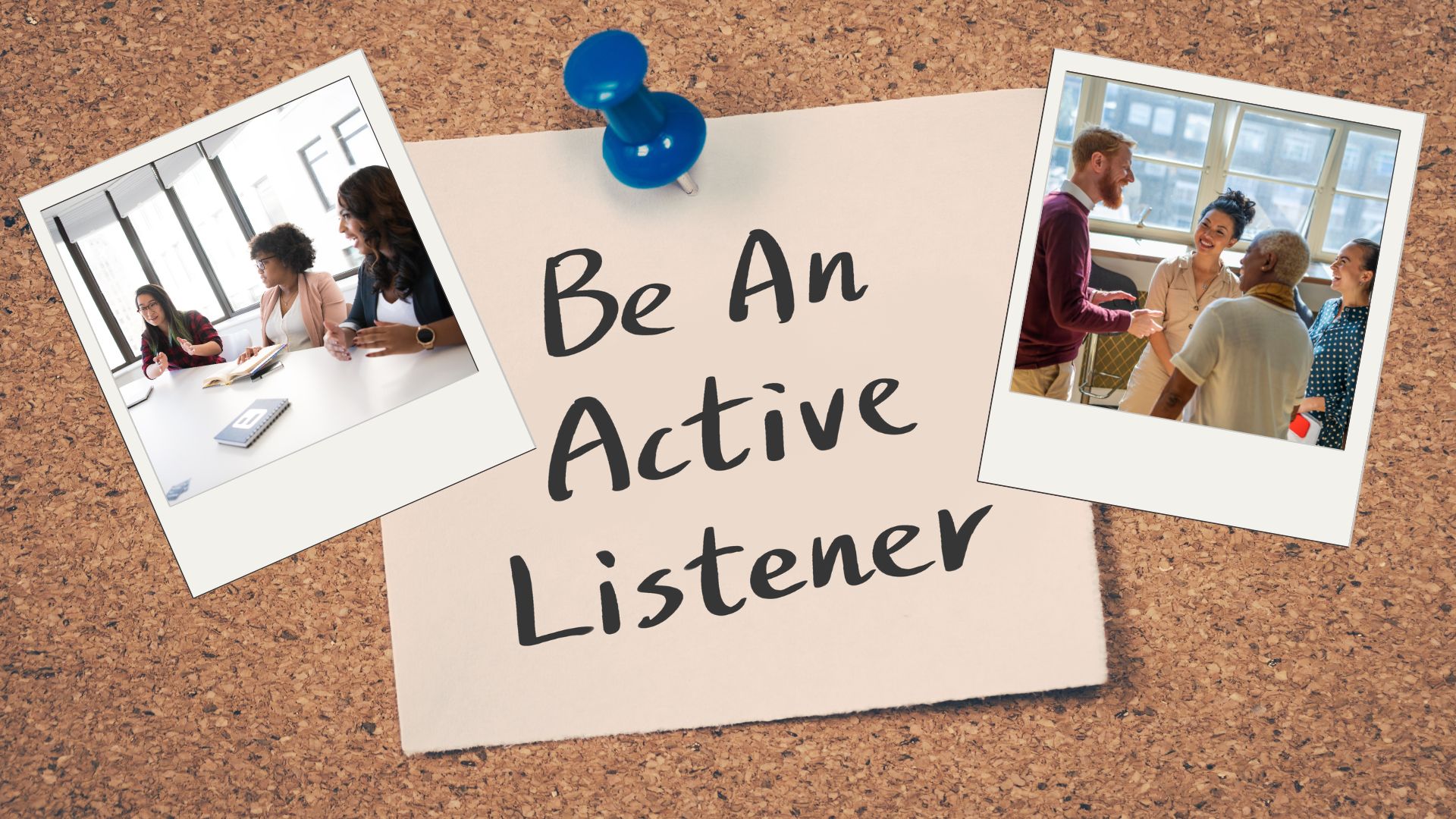There’s a lot of noise out there! Today’s political and governmental climate is heated and evolving. Inter-agency communications are strained by the fast pace and competing priorities. The need for positive communication demands cooler heads and thoughtful conversations, but how do we evoke reason over the noise? We find ourselves in a vacuum of virtual chatter like we’ve never seen before, and it grows every day and with every new communications and social media platform that emerges. There has never been a more important time for “active listening,” but it is elusive. If leadership of any kind is within your professional development ambitions, now is the time for you to start practicing this critical skill. Active listeners make the most effective and trusted leaders, and they empower others to reach their full potential.

What Is Active Listening?
Most of us listen with the intent to talk. This means that, in most conversations, we are mentally composing what we want to say while someone is speaking, and we often jump in to speak before the current speaker has put a verbal period on their last statement. Active listening involves not just hearing, but truly listening with empathy to fully understand the speaker’s meaning and feelings around an issue. It is listening to understand, not simply hearing until it’s your next turn to speak.
A truly tuned-in active listener will often repeat a point that the previous speaker has made, and then build on that when stating their own thoughts and positions. This demonstrates empathy and respect for the other discussion participants, and it creates a safe environment for sharing meaningful content that will minimize misunderstandings and lead to productivity. Active listeners often begin to share their thoughts with opening statements such as:
- “I hear you say that _____. Did I capture your point correctly?”
- “When you say ______, do you mean____?”
- “Can you tell me more about what you mean when you say _____?”
- “I appreciate your point about _____. I’d like to expand on that.”
What Do Active Listeners Do?
During your next meeting, virtual or in person, see if you can spot the active listeners. You should see some or all of the following behaviors:
- Set clear goals for the meeting or conversation.
- Are mindfully present — they are not distracted by looking away from the virtual call or looking at their mobile device during a meeting.
- Ask questions before giving an opinion or making their point.
- Make eye contact with the speaker and nod in affirmative reaction to a speaker’s point.
- Takes notes and reads from them when restating someone’s point or asking someone to clarify their point.
Practice Makes (Nearly) Perfect
You can practice active listening in any conversation. The next time you’re with friends, family, or colleagues in a casual situation, start your turn to talk with one of those clarifying questions. If someone asks you what you’re doing, be open. Let them know that you’re working on your own listening and conversation habits. In your next meeting, jot down a point you want to make (while someone is speaking) and then open your turn to talk by repeating what that person just said, before sharing your point.
HINT –> Do not expect perfection or a final level of expertise…ever! We are all human, so we slip into or default to our habits and unique personality characteristics. That’s fine. Just practice every chance you get, and soon active listening will become one of those habits.
Here are some helpful resources for more information on active listening:
Here are some great training opportunities and course offerings to kick off your learning:
- Federal Training: Human Resources Institute
- Center for Creative Leadership
- Management Training Institute
- HBR Podcast: Practice Your Active Listening Skills
The multi-faceted nature of Susan Powell’s professional background paints the picture of a lifetime learner who has always taken full control of her career path and decisions to apply her learning experiences in the most productive ways possible. Susan has brought her passion for writing and communications to every career upgrade and role, which helped her to secure the Marketing Director position for a cybersecurity company that she holds today. Fueled by her continued enthusiasm for earning applicable certifications, she continues to develop her marketing prowess and channel partner marketing skills. This former elementary teacher-turned-marketer is still a happy work-in-progress.





Leave a Reply
You must be logged in to post a comment.